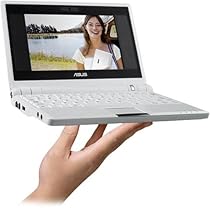2008 will be a "Tipping Point" for how IT is done in organisations. The end of the dominance of the desktop PC is at hand and the arrival of the true network organisation is imminent. This will have profound effects on business as well as IT.
Tom Worthington is a consulting ICT professional, who represents his client's interests with software engineers, hardware suppliers, contractors and other suppliers engaged on a computer project. Tom has been an expert witness in several court cases involving international patent, computer, web and Internet issues, as well as advising governments and companies on ICT problems. He is a Adjunct Senior Lecturer in the Department of Computer Science, Faculty of Engineering and Information Technology at the Australian National University, where he teaches the design of web sites, e-commerce and professional ethics. In 1999 he was elected a Fellow of the Australian Computer Society for his contribution to the development of public Internet policy. Tom is an information technology professional, with 22 years experience, past president, Fellow and Honorary Life Member of the Australian Computer Society, a voting member of the Association for Computing Machinery and a member of the Institute of Electrical and Electronics Engineers.
Zonbu claim carbon neutral computer:
With Zonbu, green doesn't have to make you blue! With its efficient ultra low power design, Zonbu delivers the power of a traditional desktop computer but uses just a fraction of the energy. That could mean as much as $10 a month in energy savings for you — and might just help save the planet, too. Not only does Zonbu's low power design reduce CO2 emissions, but by buying carbon offsets, we make the operation of your Zonbu device completely carbon neutral. Talk about guilt-free computing!
From: Good things come in small boxes, Zonbu, 2007
Via claim Carbon Free Computing:
VIA Carbon Free Computing addresses this issue head on, aimed at offering the world's first line of PC products certified Carbon Free. VIA works with environmental experts to calculate the electricity used by an average Carbon Free Computing product over its lifetime (assumed to be 3 years). Then from the amount of electricity used, VIA calculates how much carbon dioxide emissions will be released into the environment mainly as a result of fossil fuel burning power plants, and then works with regional offset organizations to "offset" that amount of carbon dioxide through projects such as: * Reforestation ... Alternative Energy ... Energy conservation ...
From: VIA Carbon Free Computing - Breathe Easier!,VIA, 2007
Thin client computers can offer benefits beyond environmental ones. As an example thin clients can replace desktop PCs for those workers only needing standard office applications. The thin client can also replace a digital telephone. Corporate applications, such as payroll and finance can be provided to the desktop using the web browser and interactive web applications, such as AJAX. Corporate documents can be retained in central file servers and Electronic Document Management Systems. This removes the need to maintain as much software on the desktop and increases the security of corporate data.
Servers can be consolidated into efficient and easier to manage data centers. These can take advantage of low power disks, processors and green power.
As an example, the new federal government could institute a program in early 2008 to provide a standard desktop to all staff, including office applications, email and voice communications. All agencies would be provided with an EDMS to hold their corporate documents. Any federal public servant or contractor could then work from any federal government office. When a desktop unit failed, a replacement could be sent by courier and user installed, with the broken unit returned for repair. No data would be lost in the process, as none would be stored on the desktop.




